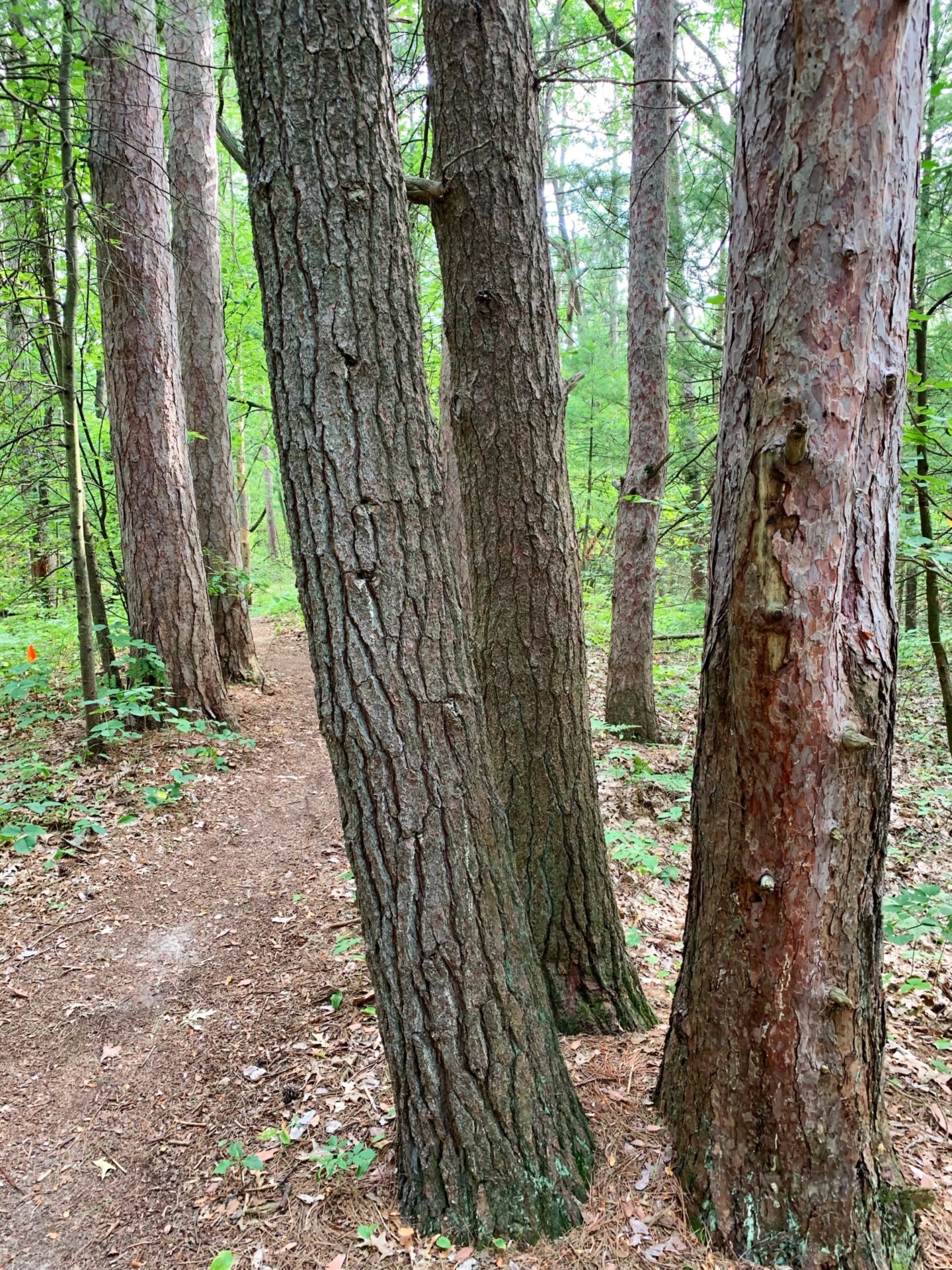Pinery
Garden Clippings for August 22, 2020
There is nothing good about Covid-19. And it looks as if it is not going away anytime soon.
But we really do not have to look hard to find a few side benefits that are coming out of this Covid era. Our skies are cleaner and quieter because airline travel has come to a near halt. We are spending more time at home in the garden, pulling weeds, planting veggies, and cheering up the landscape.
I have put more miles on my bike than I have in the last decade. I frequent the Howard Watson Nature Trail and I when I do, I have lots of company.
A weekend ago, Cheryl and I took the 45-minute drive to the Pinery to meet up with a few of my siblings. The lake water was warm, the shore was hot, the flies were biting, and the shade was welcoming. Six of us tackled the Wilderness Trail which took us through the forest dominated by Oaks and Poison Ivy.
The following day, Cheryl and I returned to Pinery to hit three short trails: Riverside, Bittersweet and Hickory. On our way out we traded up our $18.00 day pass for an annual pass which will give us unlimited access to Pinery and all 330 Ontario parks until December of 2021.
Pinery Provincial Park is a jewel. We will be sure to return often, next time with our bikes.
Pinery Park is not Ontario’s biggest Provincial Park, but with just over 1,000 campsites, it might be the most populous. Its 10 kilometers of sandy shoreline offer plenty space for hundreds of families to enjoy clean water and outstanding sunsets.
I am not much of a beach bum, preferring instead to hike the trails, giving me an opportunity brush up on my plant identification skills. I have the trees nearly mastered, but many of the shrubs and wildflowers have me baffled.
Pinery Provincial Park became part of the Ontario Provincial Park system in the 50’s. In an effort to revitalize and make the forest denser, nearly 3 million Red and White Pine seedlings were planted. That was a noble effort, but foresters now recognize the Pine tree planting was an oops because it artificially impacted the native Oak Savanna ecosystem.
Wander through the park and you will quickly see that Oaks are plentiful. Red Oaks are greatest in number, followed by White, Black, Swamp White, Bur, and Chinquapin Oak. The newest Oak added to the list is Dwarf Chinquapin. With a guidebook or plant identification app, it is quite easy to decipher the difference between the Oaks by looking at leaf shape and bark.
Three interesting but less plentiful trees in the Park are Shagbark Hickory with its distinctive shaggy bark and large leaves, Tulip Tree with its soaring height and straight stem, and Sassafras with its mitten shaped leaves.
Those who have never visited Pinery should pack a picnic lunch and head out. Be careful to not disturb the fragile and unique Oak Savanna and Coastal Dune Ecosystem. Rent a canoe or kayak to paddle up the Ausable Channel and return in winter for cross country skiing.


